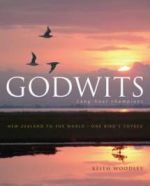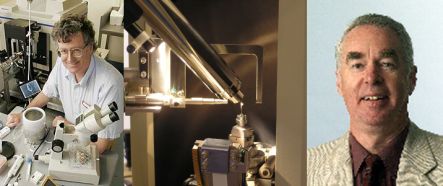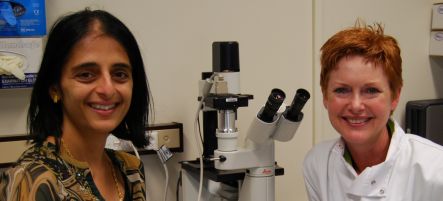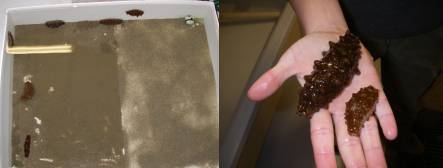Our Changing World for Thursday 17 December 2009
Godwits

Above: Jesse Conklin with a bar-tailed godwit, cannon nets after they have been fired, and the Manawatu Estuary (images: A. Ballance)
Bar-tailed godwits breed in Alaska in the northern hemisphere summer, and spend their non-breeding season in the southern hemisphere, in eastern Australia and New Zealand. Other species of godwits breed in Siberia and other parts of the Arctic, and over-winter in Asia and southern Africa. Satellite tracking carried out by Massey University researcher Phil Battley, with colleagues from the US Geological Survey, proved that godwits travel from New Zealand to Alaska up the East Asia-Australaisan flyway, and are capable of returning to New Zealand in a single non-stop flight.
 On the tail of the satellite tracking project PhD student Jesse Conklin is using tiny data loggers attached to the legs of godwits to track their annual cycles of movement, and he is also collecting as much information about their moulting and other life cycle events using digital photos and observations. He is studying a small population of birds that are summer residents in the Manawatu River estuary, at Foxton Beach. In the first week of November Alison Ballance joined Jesse Conklin and a large team of shorebird experts that included Phil Battley, David Melville, Adrian Riegen, Graham Taylor and Dick Veitch in a cannon netting mission to retrieve 24 data loggers from the Foxton Beach birds.
On the tail of the satellite tracking project PhD student Jesse Conklin is using tiny data loggers attached to the legs of godwits to track their annual cycles of movement, and he is also collecting as much information about their moulting and other life cycle events using digital photos and observations. He is studying a small population of birds that are summer residents in the Manawatu River estuary, at Foxton Beach. In the first week of November Alison Ballance joined Jesse Conklin and a large team of shorebird experts that included Phil Battley, David Melville, Adrian Riegen, Graham Taylor and Dick Veitch in a cannon netting mission to retrieve 24 data loggers from the Foxton Beach birds.
To find out everything you want to know about godwits check out Keith Woodley's new book 'Godwits: long haul champions' (Penguin Books). The Asia Pacific Shorebird Network encourages international co-operation in the study and conservation of shorebirds.
X-ray Crystallography
In the 1950s, New Zealand born Maurice Wilkins, together with James Watson and Francis Crick (and with some help from Rosalind Franklin) determined the double helix structure of DNA using a technique called x-ray crystallography. The three men won the Nobel Prize for their work.
X-ray crystallography is still used today, to determine, for example, the precise configuration of chemical compounds like pharmaceuticals, but the advent of modern computing means that diffraction calculations are much faster.

Ruth Beran goes to Massey University to meet Geoff Jameson (above left) and IRL's Graeme Gainsford (above right), who explain what x-ray diffraction and crystallography is, how it's done, and what it can be used to measure.
Corneas and stem cells

(image: Maree McInerney)
Corneal disease is a major cause of blindness, affecting millions of people worldwide. Corneal blindness is usually treated via transplantation of donated corneas into the diseased eye, and around 250 corneal transplants are performed in New Zealand every year.
However, University of Auckland researchers Dipika Patel (left) and Jane McGhee (right) are looking at the potential of adult stem cells to cure the disease. Ruth Beran meets them in their lab at the Department of Opthalmology, where she gets to see some of the cells they have grown.
Sea Cucumbers - Ocean Science Series part 6

Above: Experiment allowing sea cucumbers (pictured at right) to choose between different concentrations of organic matter (image: A. Ballance)
They may not be the most beautiful things on earth, but Matt Slater from Auckland University's Leigh Marine Laboratory believes that sea cucumbers are very useful creatures indeed. Although they appear to just lie around on the sea floor looking like knobbly sausages, they are in fact hard at work, recycling organic rubbish. Alison Ballance heads to Leigh to find out more about the idea that sea cucumbers could clean up the waste from underneath mussel farms and be a valuable export, a concept known as polyculture.